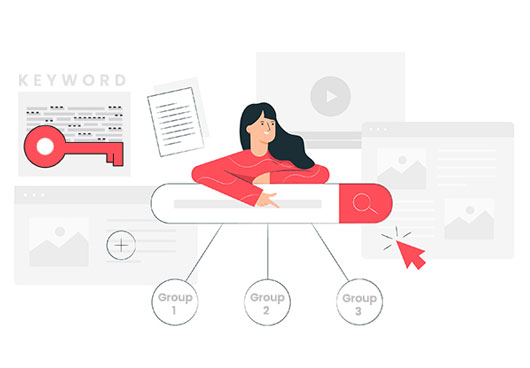How to Optimise Financial Services Apps with a Mobile Experience Audit
Contributors:
Kiran Gurung
Published: December 5, 2024

Summary
Conducting mobile experience audits is crucial for financial services companies looking to optimize their apps and enhance user satisfaction. With comprehensive coverage of key elements like user-centric design, security measures, and performance optimization, financial institutions can address common pain points while preparing for future trends. The importance of seamless mobile experiences cannot be understated, as 72% of users consider app experience a decisive factor in continuing to use financial services apps. Through actionable insights and strategic recommendations, organizations can create secure, engaging, and user-friendly mobile banking experiences that drive retention and satisfaction.
Did you know that 72% of users consider app experience a key factor in deciding whether to continue using a financial services app? Mobile experience audits are the cornerstone of improving user engagement and retention for banking and financial apps. Let’s dive into optimising your app for seamless user experiences.
Why do Financial Services Apps Require a Mobile Experience Audit?
Financial services apps handle sensitive user data, facilitate critical transactions, and represent a key touchpoint between businesses and customers. Any user experience (UX) friction can lead to abandoned transactions, customer dissatisfaction, and lost revenue.
Benefits of a Mobile Experience Audit for Financial Apps:
- Improved Usability: Ensures users can easily navigate through features like account management, fund transfers, and bill payments.
- Enhanced Trust: Strong security measures increase confidence in handling personal and financial data.
- Increased Retention: A smooth, error-free experience boosts customer satisfaction and loyalty.
- Regulatory Compliance: Ensures adherence to financial industry standards and data protection laws.
Core Elements of a Stellar Financial App User Experience
1. User-Centric Design
Financial apps need intuitive designs that reduce users’ cognitive load. Simple layouts, clear instructions, and easily accessible features help users quickly accomplish tasks like checking balances or transferring money.
- Case in Point: Mobile banking apps such as Revolut and Monzo excel in simplifying complex financial operations with clean UI and guided user journeys.
- Pro Tip: Include quick links for frequently used features, such as “Pay Bills” or “View Transactions.”
2. Fast and Reliable Performance
Speed and reliability are non-negotiable in financial services apps. Users expect near-instant processing of payments, fund transfers, or stock trades.
Key Insights: Studies show that a 2-second delay in load time can increase abandonment rates by 87%.
Checklist for Performance:
- Minimise API response times.
- Stress testing should be conducted during high-traffic periods, such as salary dates.
- Optimise app size for faster downloads and updates.
3. Security-First Approach
With cyber threats on the rise, security is critical. Features such as end-to-end encryption, multi-factor authentication, and biometric login must be standard.
Significant Feature: Real-time transaction alerts inform users about suspicious activities.
Best Practices for Financial Apps:
- Regular vulnerability assessments.
- Compliance with standards such as PCI DSS for payment security.
- Clear communication about the app’s security measures to build user trust.
4. Personalisation and Smart Recommendations
A personalised experience keeps users engaged and makes financial apps indispensable.
How It Helps: Data-driven insights can suggest investment opportunities, savings goals, or spending trends tailored to individual users.
Example: Apps like Mint and Yodlee use AI to offer personalised budgeting advice and spending analytics.
5. Accessibility for All
Financial apps must accommodate users of varying abilities, offering features like voice assistance, high-contrast modes, and text resizing options.
Why It Matters: Accessibility is ethical and widens your app’s reach.
Quick Wins: Add screen reader support and make all key functions operable via keyboard navigation.
Addressing Pain Points in Financial Apps
1. Tedious Onboarding Processes
- Issue: Long, complicated sign-up procedures deter users.
- Solution: Enable onboarding with minimal data requirements and provide social sign-in options like Google or Apple ID.
2. Lack of Transparency
- Issue: Hidden fees or unclear transaction processing times frustrate users.
- Solution: Use visual elements such as progress bars or status updates to inform users of transaction stages.
3. Limited Customer Support
- Issue: Delayed or ineffective support can drive users to competitors.
- Solution: Introduce live AI-powered chatbots for instant assistance and 24/7 customer support availability.
Steps to Conduct a Mobile Experience Audit for Financial Apps
1. Define Audit Objectives
Clarify goals such as improving navigation, identifying security gaps, or enhancing personalisation features.
2. Use Data Analytics for Insights
Leverage tools like Google Firebase or Mixpanel to analyse user behaviour, drop-off points, and session durations.
3. Evaluate User Interface and Experience
Perform heuristic evaluations to assess layout simplicity, feature discoverability, and error prevention mechanisms.
4. Security Testing
- Key Areas to Cover: Data encryption, secure APIs, and compliance with industry standards.
- Recommended Tool: Use OWASP ZAP to identify vulnerabilities.
5. Gather User Feedback
Engage real users in testing to uncover issues that automated tools might miss. Use surveys and focus groups for actionable insights.
6. Implement Improvements and Monitor Performance
Fix identified issues and track app performance metrics post-implementation to ensure improvements have the desired impact.
Future Trends in Financial App Design
1. Voice-Activated Transactions
Voice-enabled features simplify tasks like fund transfers or bill payments for users on the go.
2. Blockchain Integration
Blockchain ensures transparency and security, particularly for international transactions.
3. Gamification
Gamified elements like savings challenges encourage user engagement and financial discipline.
4. Open Banking API Ecosystems
By integrating with other financial service providers, apps can offer users a holistic view of their finances.
In Conclusion
Optimising the user experience of financial apps is an ongoing journey that involves regular audits and updates. From enhancing usability to implementing robust security measures, addressing user pain points ensures your app stands out in a competitive market.
At upGrowth, we specialise in helping financial service providers optimise their digital presence. Let us guide you in transforming your mobile app into a trusted, user-friendly platform that keeps customers returning.
FAQs
1. What is a financial services mobile app experience audit, and why is it important?
A financial services mobile app experience audit thoroughly evaluates an app’s usability, performance, design, and security. It helps identify gaps that may hinder user satisfaction and ensures the app meets customer expectations and industry standards.
2. How does the user experience of a financial mobile app impact customer retention?
A seamless and intuitive user experience builds trust and satisfaction, encouraging users to return. Conversely, poor navigation or security concerns can drive users to competitors.
3. What are the essential elements of a great user experience in mobile banking apps?
Key elements include intuitive navigation, fast load times, robust security features, personalisation, and accessibility for diverse user needs.
4. What are the common pain points users face in financial services mobile apps?
Common pain points include slow performance, complicated onboarding, unclear fee structures, poor design layouts, and insufficient customer support.
5. How can a mobile app audit identify gaps in the user experience?
An audit evaluates user journeys, identifies bottlenecks, and assesses functionality and security flaws to provide actionable insights for improvement.
6. What tools and methodologies are used in auditing mobile app user experience?
Popular tools include Hotjar for usability testing, Firebase for performance analysis, and methodologies like heuristic evaluation and user journey mapping.
7. How does mobile application security contribute to a positive user experience?
Strong security measures, such as encryption and biometric authentication, foster trust and confidence, ensuring users feel safe handling sensitive financial data.
8. What are the latest mobile banking app design and development trends?
Trends include voice-enabled banking, AI-driven personalisation, gamification, blockchain integration, and open banking API ecosystems for a holistic financial overview.
About the Author
Copywriter at upGrowth
Kiran Gurung is a Copywriter at upGrowth, where she focuses on creating clear and engaging content that connects with audiences. With a strong background in marketing, she brings valuable experience to every project she works on. Kiran’s thoughtful approach and creativity have been an important part of upGrowth’s campaigns. When she’s not crafting captivating stories, Kiran finds inspiration in nature’s beauty and unwinds by immersing herself in Bollywood classics, blending creativity with her love for life’s vibrant moments.
 Growth Strategy and Planning
Growth Strategy and Planning Inbound Growth
Inbound Growth Growth Hacking
Growth Hacking Search Engine Optimization
Search Engine Optimization Paid and Performance Marketing
Paid and Performance Marketing Social Media Marketing
Social Media Marketing AI-Driven Growth Strategy
AI-Driven Growth Strategy
 Growth Tools
Growth Tools Offers
Offers

















Leave a Reply